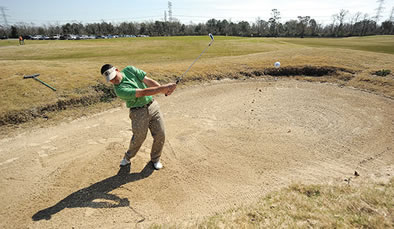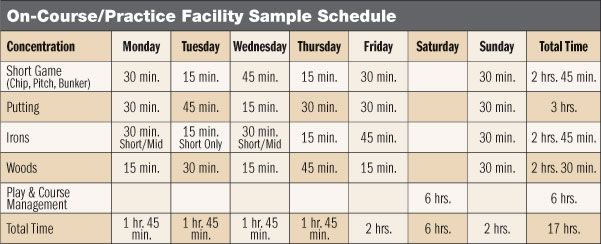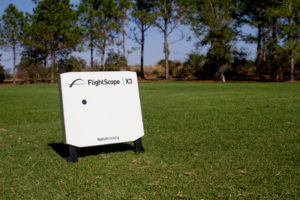I had my readers and patrons send in their golf questions that they wanted to be answered. The chosen question in return won a free lesson and a round of golf to enjoy following the lesson. Mr. Kaiser wrote, “How do you practice properly? I mean, when out on the range, what does a good practice routine involve? I practice a lot but need to know how to get the most out of it.” This is a great question since 47% of higher handicapped players never practice and those who do practice don’t practice properly.
When you visit your local PGA Professional and receive a successful lesson, the pro correctly diagnoses the problem, gives tips/drills to help correct the problem and that help you make better golf swings, but for it to be a truly successful lesson you must then PRACTICE. Seems like such an easy concept to help develop a player’s swing, but I see so many of my students adopt a technique change on the range during a lesson very quickly; however, I always hear back from my students that it did not hold up on the course.
When I was younger, I had the same issue of not having the technique hold up under pressure. How doyou overcome this? Practice or over learn. As we have all heard, practice makes permanent whether it’s good or bad habits. Take a look at the top players in the world; why do they play so well? They treat the game of golf like a job. The only way you get better at your job is repetition. Practice is essential both for improvement and maintenance of present skill level. Tour players find that there aren’t enough hours in the day to practice what they need in order to stay on top of all parts of the game. However, the average weekend amateur player has considerable fewer hours to practice during the week due to other responsibilities. Therefore, the choice on what to practice becomes that much more important.
If improving your scoring is your objective, then you should spend at least 50% of your practice time on the short game. That’s right, 50%. While most amateur players fail to practice, those that do practice spend too much of their time just beating balls. Receiving lessons from a PGA Professional is great first step to acquire more knowledge of the game, but practicing it is the next step. Gary Player once said that “It is not enough to know what to practice. The real key is getting yourself to do it. The player who expects a lesson to ‘take’ without subsequent practice just isn’t being honest with himself or fair to his golf professional.”
The most important advice about practice, other than just doing it, is to simulate actual play. Since golf is a target game, then your practice should always include targets. Create realistic situations. It takes a lot of discipline, but you should treat each practice shot as though it is on the course. Don’t always hit off of preferred lies. Hit shots off of uneven lies and out of the rough at times. When practicing the full swing, hit shots with one club, then another club, and then another, just as you would during a round of golf. Remember that sloppy practice will produce sloppy play on the course when it counts. Make sure that you practice to a target. Hitting balls is just exercise, playing to a target is practice.
One purpose of practicing is to develop confidence. A player that is trying to gain more confidence should always start their practice routine with the short irons because they are easier to hit which will then help with their confidence. When you start to think about a practice routine, make sure your practice sessions have a purpose. Research has shown that multiple short practice sessions help develop muscle memory quicker than long extensive practice sessions. So for those of you who don’t have a lot of time, don’t worry you will be fine. Write down a schedule of what is going to be practiced at what times and for how long. You and your PGA Professional should come up with a schedule of what needs the most work. The schedule should include: short and long game, specific shots, remedial work, physical and psychological training, playing and information gathering. Let’s take a look at a practice routine for an amateur that only has 2 hours or less to practice during Monday thru Friday. Physical and psychological training and information gathering can be done in the comfort of your own home.
So the next time you are unsatisfied with your round of golf, analyze your practice habits leading up to your round and you should be able to easily figure out what went wrong. Good practice habits and routines will make for better scoring, accuracy and a more repetitive swing. So with proper practice this game can be managed so that everyone may enjoy the game and get the most out of it as they can. Just remember you can only get out of this game what you put into it.




 (@manoloteachesgolf)
(@manoloteachesgolf)